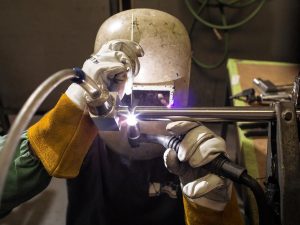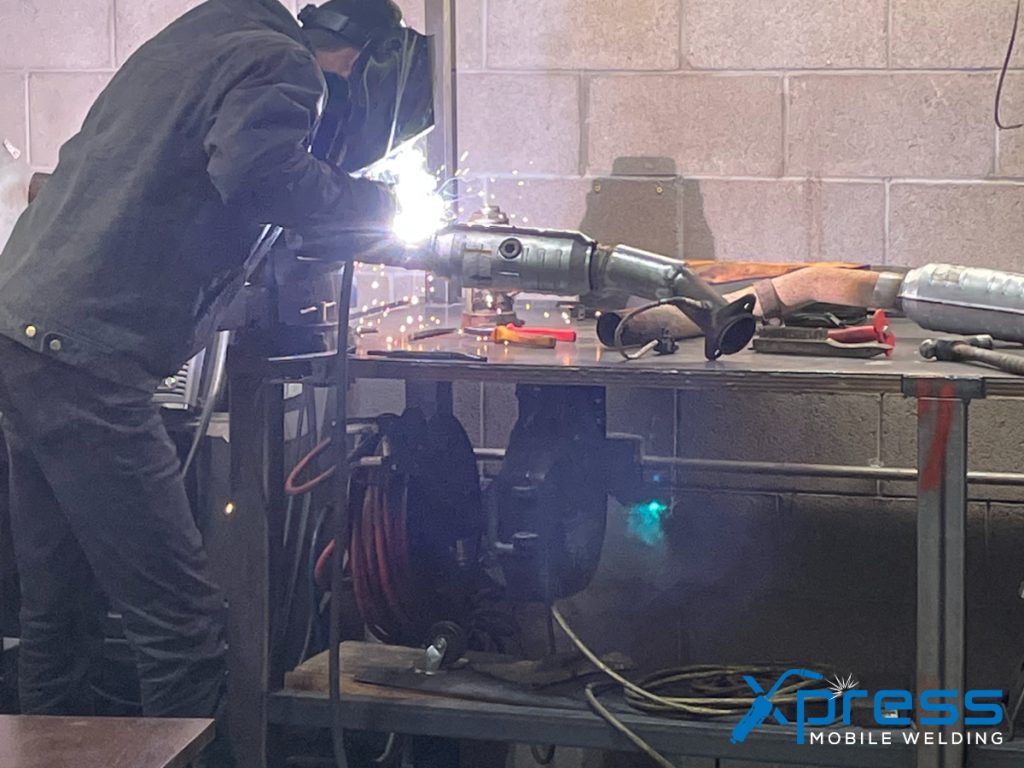Welding is a process that uses heat to join two pieces of metal together. It can be used to create strong, durable joints for things like bridges and skyscrapers. But welding isn’t just for construction; it can also be used for repairs and fabrication. In this blog post, we’ll take a closer look at how welding works, and we’ll explore some of the different types of welds that are available. We’ll also discuss the safety hazards associated with welding and how to avoid them. So if you’re interested in learning more about this fascinating process, keep reading!
What Is Welding And How Does It Work?
Welding is a fabrication or sculptural process that joins materials, usually metals or thermoplastics, by causing coalescence. This is often done by melting the work pieces and adding a filler material to form a pool of molten material (the weld pool) that cools to form a joint that is as strong, or even stronger, than the base material. Welding repairs can be done on broken metal parts to fix them without having to replace the entire piece.
When welding, two pieces of metal are placed together and an electric current is passed through them. The current causes the metals to heat up and melt. A welding rod is then used to add more metal to the joint. As the metal cools, it forms a strong bond between the two pieces of metal. welding is a very versatile process and can be used to join together a wide variety of metals.
The Different Types of Welding and Their Uses
MIG welding is one of the most commonly used welding processes. MIG stands for Metal Inert Gas, and it uses an electrode that is fed through a wire feeder. MIG welding is often used for projects that require a high degree of accuracy, such as car bodies and aircraft frames. It can also be used on thicker materials, making it a versatile option for many different types of welding.
TIG welding is another popular type of welding. TIG stands for Tungsten Inert Gas, and it uses a non-consumable tungsten electrode. TIG welding is often used for projects that require precision and detail, such as jewelry making or metal sculpture. It can also be used on thinner materials, making it a good choice for delicate projects.
SMA Welding is a type of welding that uses a flux core arc. SMA stands for Shielded Metal Arc, and it uses an electrode that is shielded by a gas. SMA welding is often used for projects that require a high degree of accuracy, such as car bodies and aircraft frames. It can also be used on thicker materials, making it a versatile option for many different types of welding.
Flux Core Arc Welding is a type of welding that uses an electrode that is shielded by a gas. Flux core arc welding is often used for projects that require a high degree of accuracy, such as car bodies and aircraft frames. It can also be used on thicker materials, making it a versatile option for many different types of welding.
How To Weld Safely?
 Welding is a dangerous activity that can result in burns, electrical shocks, and even death if proper safety precautions are not followed. Because welding involves working with molten metal, it is important to wear welding gloves and gloves to protect your hands from heat.
Welding is a dangerous activity that can result in burns, electrical shocks, and even death if proper safety precautions are not followed. Because welding involves working with molten metal, it is important to wear welding gloves and gloves to protect your hands from heat.
In addition, welding aprons and long sleeves help to protect your body from sparks and hot metal. welding hoods are also essential to welding safety, as they help to deflect sparks away from your face and eyes.
Finally, it is important to always work in a well-ventilated area when welding, as fumes from the welding process can be harmful to your health. By following these simple safety tips, you can help to ensure a safe welding experience.
Tips for Beginners Who Want To Learn How to Weld
If you’re interested in welding, you’re not alone. Welding is a popular choice for many career-minded individuals because it offers a high degree of job security and satisfaction. Plus, there’s a welders in phoenix great sense of pride that comes with knowing you can create something from start to finish with your own two hands. However, before you welders in phoenix can start your journey to becoming a welder, there are a few things you need to know.
Here are some tips for beginners who want to welders in phoenix learn how to weld:
1. Choose the Right Welding Process for Your Project: There are welders in phoenix several different types of welding processes available, and each one is best suited for certain projects. If you’re just getting started, it’s important to choose a welding process that will be well-suited to the type of projects you’re interested in pursuing. The most common welding processes used by welders in amateur and professional settings are arc welding, oxy-fuel welding, tungsten inert gas welding, and plasma cutting.
2. Consider Taking a Welding Class: Learning how to weld can be welders in phoenix daunting, but taking a welding class can help ease you into the process and ensure that you have a solid foundation on which to build your skills. Many community colleges offer welding classes, and there are also many private welders in phoenix companies that offer welding training. Even if you don’t take a formal class, consider finding a more experienced welder who can welders in phoenix show you the ropes and answer any questions you might have.
3. Invest in Quality Welding Equipment: One of the most important welders in phoenix things you can do as a beginner welder is invest in quality equipment. Cheap equipment is more likely to break down or malfunction, which can cause frustration and delays when you’re trying to weld. In addition, quality equipment will make it easier to produce high-quality welds that meet industry standards. When first starting out, it’s often best to rent or borrow equipment so that you can get a feel for what kinds of products are available and what suits your needs best. Once you have more experience, you can then begin investing in your own equipment.
4. Practice, Practice, Practice: As with any skill, the more you practice welding, the better you’ll become at it. Set aside time on a regular basis to practice your welding techniques. You can use scrap pieces of metal or even old household items as practice materials. The more comfortable you become with the welding process, the easier it will be to produce high-quality welds when working on actual projects.
5. Join a Local Welding Club or Group: Joining a local welding club or group is a great way to meet other welders in your area and learn from more experienced practitioners. These groups often hold regular meetings where members can share tips and advice, swap stories about their latest projects, and show off their workmanship. In addition, many clubs also sponsor competitions and events where welders can showcase their skills and compete for prizes. Even if competition isn’t your thing, joining one of these groups is still an excellent way to improve your skills and get exposure to new ideas and techniques.
Projects That Can Be Completed With Welding Skills
Welders in phoenix are experts in many types of welding, from MIG and TIG welding to stick welding and flux-cored arc welding. As a result, they are able to complete a wide range of projects, from small repairs to large-scale fabrication projects.
In addition to welders in phoenix, there are also many companies that offer welding services. These companies can provide welders with the skills and experience necessary to complete a wide range of projects. As a result, welders who are looking for a challenge can find a wealth of opportunities by pursuing a career in welding.
The Future of Welding and Its Impact on the Economy
As welding technologies continue to evolve, the potential applications of welding are only expanding. For instance, advances in welding techniques have made it possible to create stronger and more durable welds, which has revolutionized the construction industry. In the future, welding will continue to play an important role in the economy by creating new opportunities for businesses and supporting existing ones. As welding technologies advance, businesses will be able to create new products and enter new markets. In turn, this will lead to job growth and economic stability.
Conclusion
Welding is a versatile and essential skill that can be used in a variety of industries. As a result, welders play an important role in the economy. In order to become a welder, it is important to invest in quality equipment, practice regularly, and join a local welding club or group. By doing so, welders can develop the skills and knowledge necessary to complete a wide range of projects. In addition, as welding technologies continue to evolve, the potential applications of welding are only expanding. As a result, the future of welding is bright, and it will continue to play an important role in the economy.

